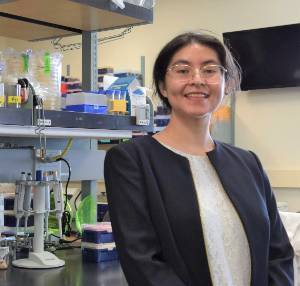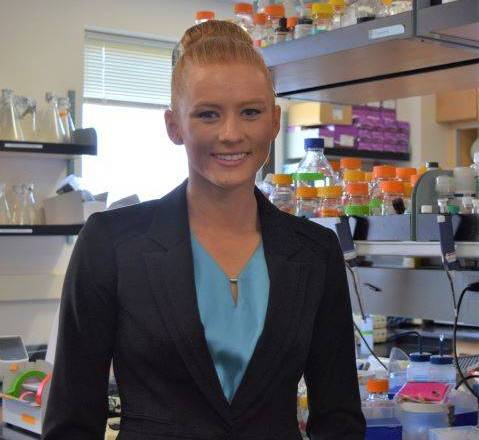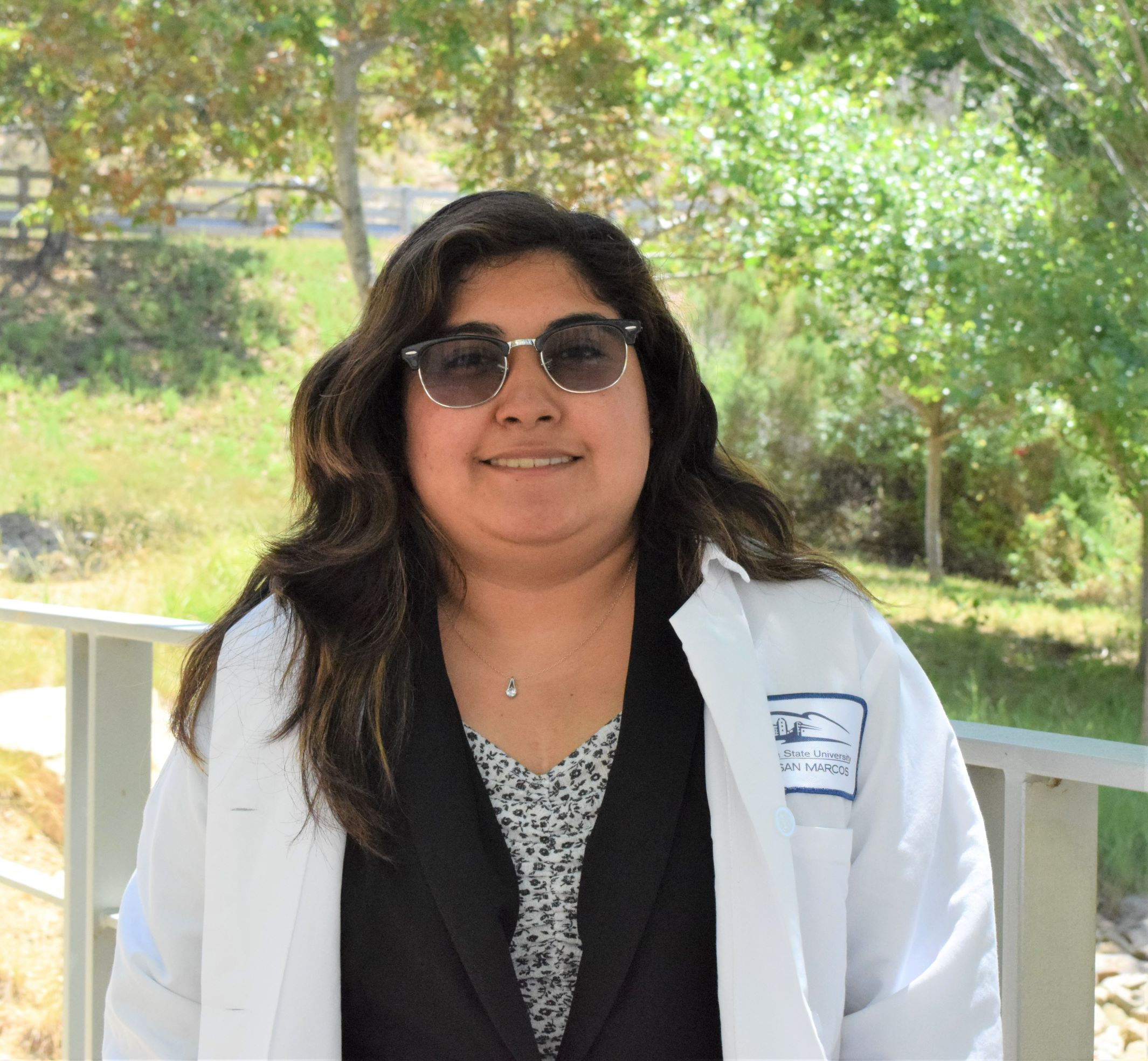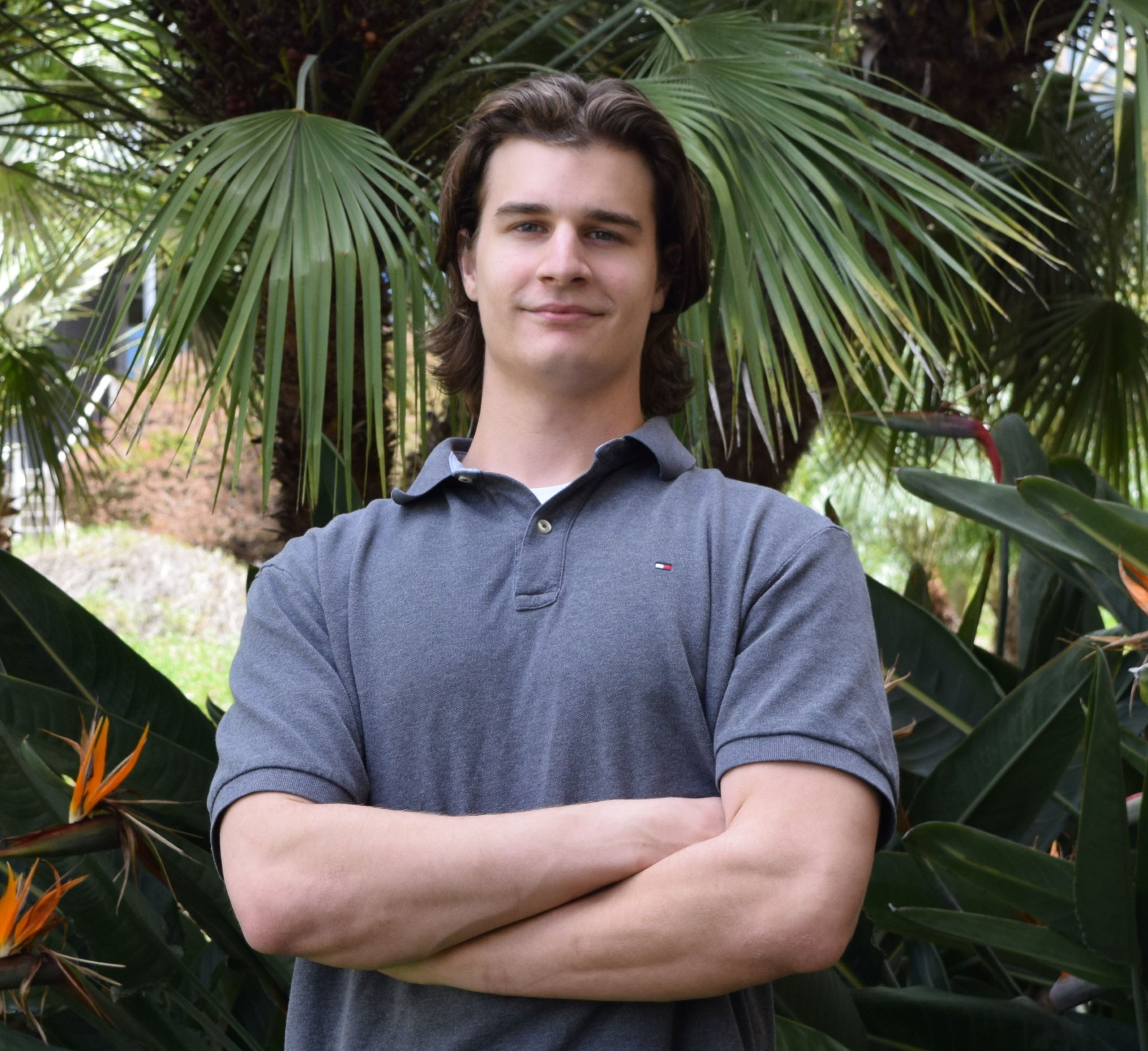 myCSUSM
myCSUSMMeet our Beckman Scholars

Berenice Almaguer, 2021-22 Scholar
Biological Sciences
- About Berenice
Ms. Almaguer completed her project and was awarded the Outstanding Research Award from CSTEM. She graduated with a BS in Biological Sciences and a minor in Chemistry. She will begin her PhD in Fall 2023 in the University of Virginia Neuroscience Graduate Program. Her Beckman Mentor was Dr. Julie Jameson
- Project SummaryNeuropeptide Y (NPY) is one of the most abundant peptides present in the central nervous system and is responsible for regulating food intake, energy metabolism, and emotional expression. Epidermal gamma delta (gd) T cells play a role in governing wound repair and homeostasis within the skin. Emerging evidence indicates that NPY could potentially play a role in serving as a transmitter between the nervous system and immune system and even within the immune system itself. The overall goal of this project was to determine whether NPY receptors are present on epidermal gd T cells to receive signals, whether epidermal gd T cells make NPY for autocrine or paracrine response, and last, whether NPY signaling induces production of chemical messengers by epidermal gd T cells.

Madison Wagner, 2021-22 Scholar
Chemistry and Biochemistry
- About MadisonMs. Wagner completed her project in 2022 and was awarded the CSTEM Outstanding Graduate award and the Chemistry Outstanding Senior. She is now working on her PhD at Scripps Research (formerly The Scripps Research Institute). Her Beckman Mentor was Dr. Robert Iafe.
- Project SummaryProject Summary: With the support of the Beckman Scholars Program, we created a novel methodology for developing benzylic cyclic ethers using gold(I) catalysts. Benzylic cyclic ethers are a common structural motif in the synthesis of several natural and synthetic products. These bioactive structures are present in a variety of widely available pharmaceuticals, such as potent anticancer, antifungal, anti-inflammatory, antimicrobial, antitumor, and cytotoxic agents, and novel preparations using affordable methods are vital to ensuring the targets are easier to attain. Our lab has developed a novel one-pot methodology utilizing gold(I) catalysts to yield five- and six-membered benzylic cyclic ethers intramolecularly using 1,4- and 1,5-diols. An increasing body of literature is showing that gold(I) catalysts can be highly effective at synthesizing a variety of pharmaceutical scaffolds, and to our knowledge, an intramolecular gold(I)-catalyzed etherification reaction is currently unprecedented in the literature. We have achieved successful intramolecular etherification yielding 5- and 6-membered rings, with proof of concept confirmed by way of product structural determination by 1H-NMR and moderately high yields (69-80%). This method is being optimized, and further research will include an exploration of the substrate scope of the reaction, with electron-rich and -poor diols being assessed to expand the utility of the reaction. This new method can yield effective pharmaceutical scaffolds easily and quickly, making it possible for pharmaceuticals containing these scaffolds to be lower cost and easier to develop.

Tanya Castellanos, 2022-23 Scholar
Biological Sciences
- About Tanya
Ms. Castellanos is completing her project summer 2023 and preparing applications for graduate school. She received the Dept. of Biological Sciences Outstanding Researcher award in 2023. Her Beckman Mentor was Dr. Julie Jameson
- Project SummaryThe wound healing process is comprised of four stages that include hemostasis, inflammation, cell proliferation, and remodeling of the wound site. Chemokine receptors are part of the G-protein-coupled receptor family that regulate the homeostasis of the immune system and inflammatory responses. In the skin, researchers have identified C-C Motif Chemokine Receptor 6 (CCR6) and C-C Motif Chemokine Ligand 20 (CCL20) as regulators of T cell migration into the wound site. CCR6 is a chemokine receptor that profoundly affects the immune system during the wound healing process particularly during the inflammatory phase. The expression of CCR6 has been explored on T cells within the dermis but not on the epidermal gamma delta T cells during wound repair. Gamma delta T cells assist in protecting barrier tissues by regulating keratinocyte homeostasis and proliferation during wound healing of an organism. Since CCR6 is expressed by a subset of epidermal T cells we will investigate whether the CCR6+ subset has additional functions during wound repair that include the production of inflammatory mediators such as IL-6. Using a combination of single cell RNA sequencing, histology and flow cytometry, we will explore the timing, location and extent of CCR6 expression and the functional output of CCR6+ epidermal gamma delta T cells. In conclusion, this project inspires the development of better medical treatments for chronic wounds and injuries by understanding the expression and function of CCR6 expression on gamma delta T cells at the wound site.

Cameron St.Onge, 2023-24 Scholar
Biological Sciences
- About CameronMr. St.Onge recently began his project and will graduate in 2024. He has strong interests in physiology and mammal conservation. His Beckman Mentor is Dr. Casey Mueller.
- Project SummaryPhenotypic plasticity is the expression of various phenotypes in response to environmental conditions. Inter-individual variability is a form of phenotypic plasticity that refers to the range of phenotypes produced between conspecifics within a population. Unfortunately, this type of variability is often over-looked or ignored entirely when studying plasticity, where research tends to emphasize the phenotypic mean rather than variation observed. The Baja California chorus frog (Psuedacris hypochondriaca) is a thermally robust species of Anuran that is endemic to many environments throughout Southern California, and is therefore an excellent model organism for examining how temperature influences inter-individual variability during development. Embryonic and larval incubation will occur at two temperatures and the degree of inter-individual variability will be quantified for metabolic rate, swimming performance and morphology. It is expected that temperature will influence the amount of plasticity and inter-individual variability observed in this species. However, exactly how variability will change is unclear, but it is likely to be trait-specific.






